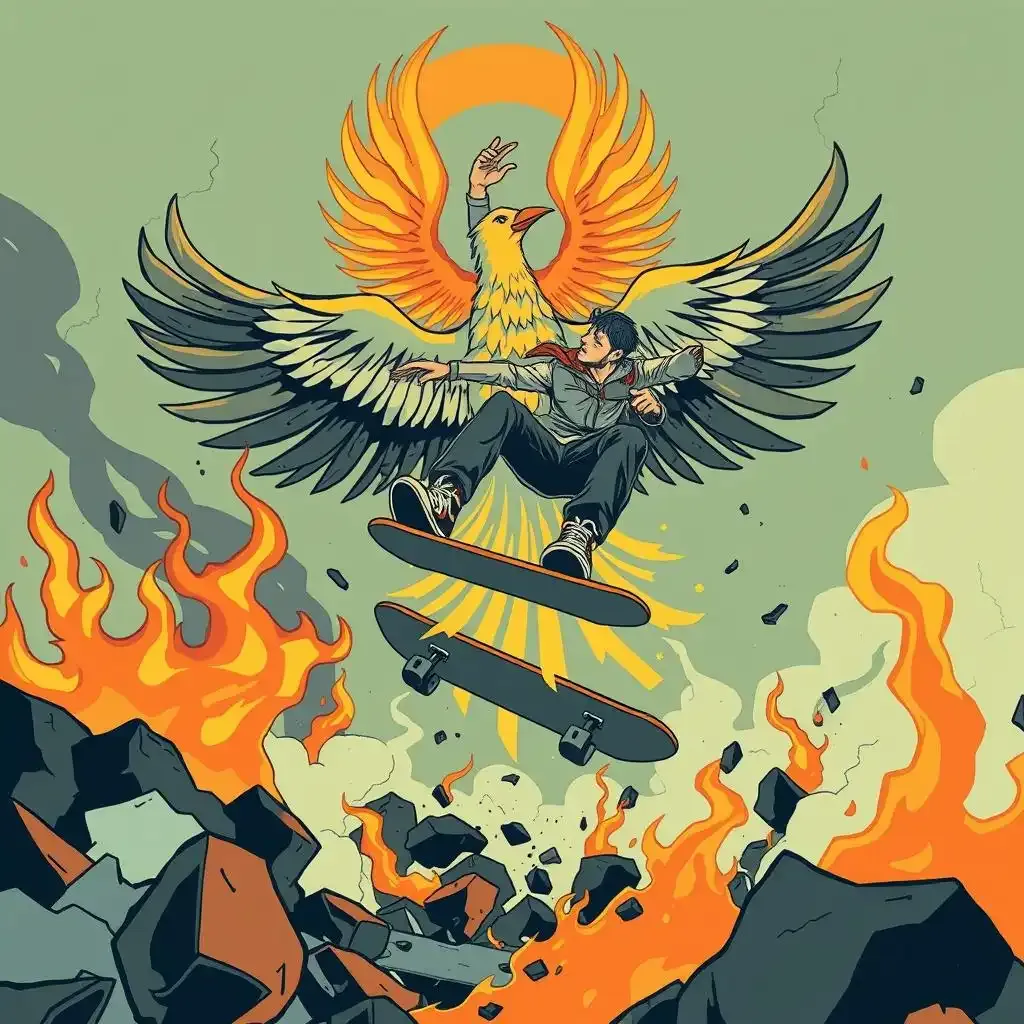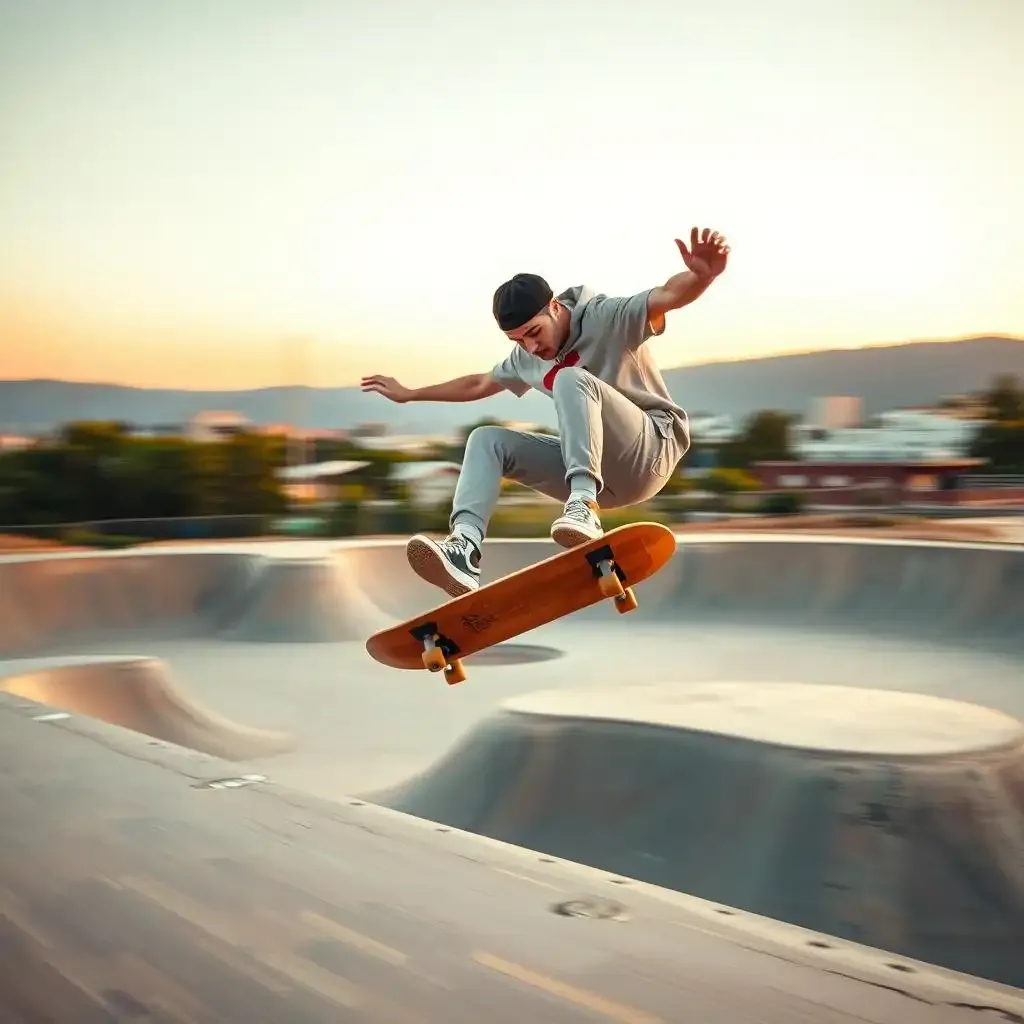Table of Contents
Whispers echo through skateparks and online forums: did skateboarding die? One minute, it seemed like everyone was grabbing a board, ollieing over anything in sight. Then, the buzz faded, replaced by new trends and fads. But just like a skater landing a tricky maneuver after countless falls, skateboarding has a knack for bouncing back. This isn't a tale of demise, but a story of evolution, resilience, and a culture that refuses to fade. Let's unpack the history, the shifts, and the vibrant reality of skateboarding today.
Key Aspect | Details |
|---|---|
Fluctuating Popularity | Skateboarding has seen highs and lows in mainstream appeal throughout its history. |
Evolution of the Sport | Constant innovation and the influence of countless skaters keep the sport dynamic. |
Challenges Faced | Concerns about increasing technicality potentially alienating casual skaters exist. |
Revitalization Efforts | Initiatives to encourage female participation, offer lessons, and market appealing apparel are underway. |
Current Status | Despite past dips in popularity, skateboarding is currently a thriving and active sport. |
The Rise, Fall, and Rebirth: Did Skateboarding Die?
The Rise Fall And Rebirth Did Skateboarding Die
Okay, so you're diving into the "did skateboarding die" debate, huh? It's a question that pops up every now and then, especially when you see fewer kids bombing hills in your neighborhood. Think of skateboarding like a phoenix – it might seem to go up in flames sometimes, but it always manages to rise from the ashes, maybe with a slightly different look, but definitely still kicking.
I remember when skateboarding first exploded. It was raw, rebellious, and everyone wanted to try it. Suddenly, sidewalks became our playgrounds, and the sound of rattling trucks was the soundtrack of summer. But then, things shifted. Maybe other trends took over, or maybe it felt like only the super hardcore were still at it. There were definitely moments where you could walk through a skatepark and think, "Huh, where'd everyone go?" It felt a bit like when you see an old ghost town – signs of life, but eerily quiet.
But here's the thing about skateboarding: it's got this underground current of passion that never really disappears. Even when it's not plastered all over TV, there are always skaters pushing the limits, inventing new tricks, and keeping the flame alive. Think of it like the roots of a really tough weed – you can chop it down, but it'll find a way to sprout back up. Remember when skateboarding came from surfing? That relationship to the waves, that feeling of freedom, it's hard to kill.
And you know what? Sometimes those "downtimes" are actually when the coolest stuff happens. When the mainstream hype fades, the real innovators step up. They tinker, they experiment, and they push the boundaries without the pressure of the spotlight. It's like when a band goes back to their garage and creates their best album after a commercial flop.
Then, BAM! Something reignites the spark. Maybe it's a groundbreaking video part, or skateboarding makes its way into the Olympics. Suddenly, there's a whole new wave of kids picking up boards, and the cycle starts again. It's this constant ebb and flow that makes skateboarding so interesting. It’s not a straight line; it’s a wild, winding path, full of ups and downs. Have you ever wondered, are skateboards dangerous? Maybe that risk is part of the appeal, part of what keeps it exciting.
Evolution and Innovation: How Skateboarding Survived
Evolution And Innovation How Skateboarding Survived
Then came better wheels. Imagine trying to skate with clunky, hard wheels. Ouch! Suddenly, someone figures out how to make softer, smoother wheels. It's like trading in your old wagon wheels for super bouncy, comfy ones. You can go faster, smoother, and even grip the ground better for more complex moves. And speaking of moves, the tricks themselves keep changing. What was mind-blowing yesterday is just the starting point for something even crazier tomorrow.Think about the ollie. It seems so basic now, right? But back in the day, it was revolutionary! It allowed skaters to get air, to hop over obstacles. It was like giving a car wings. And from that one trick, a million others sprouted. Grinds, slides, flips – it's like a never-ending recipe book of cool stuff to do on a board. Ever wondered, ? Maybe it's the constant push to do new, harder things that brings that question up.| Innovation | Impact on Skateboarding ||-------------------|----------------------------------------------------------|| Kicktail & Nose | Enabled ollies and countless other flip tricks. || Urethane Wheels | Smoother ride, better grip, faster speeds. || Skateparks | Dedicated spaces for practice and community building. || Video Technology | Allowed for sharing and progression of tricks globally. |And don't forget the places we skate! Early skaters had to make do with whatever they could find – empty pools, sidewalks, whatever. Then came skateparks. These dedicated spaces are like playgrounds designed specifically for skaters. Ramps, bowls, rails – it's a whole landscape built for pushing limits and learning new things. Plus, the gear got better. Skateboard helmets and pads aren't just for looking cool; they actually help keep skaters safe so they can keep pushing those boundaries. It's all part of the cycle: innovation leads to progression, which inspires more innovation.
The Current Landscape: Why Did Skateboarding Die Accusations are Wrong
It's Alive and Kicking, Trust Me!
Okay, so you're digging into this "did skateboarding die" thing? Honestly, it's like saying music died because disco isn't topping the charts anymore. Sure, the mainstream spotlight might shift, but the core is still burning bright. Walk into any skatepark on a sunny afternoon, and you'll see exactly what I mean. It's buzzing with energy! From little kids just learning to push to older dudes still ripping, the passion is contagious. It reminds me of when I first learned to ollie – that feeling of finally getting it is something that sticks with you. And while some might point to quieter periods in skate history, that doesn't mean it vanished. It just went underground for a bit, brewing up new styles and ideas. It's like a seed waiting for the right time to sprout. Remember those days trying to figure out if skateboards can get wet? We were out there regardless!
New Spots, New Faces, Same Stoke
What's super cool is how skateboarding has popped up in places you might not expect. It's not just about California anymore. I've seen amazing skate scenes thriving in places with crazy weather, proving that dedication can overcome anything. Think about those DIY skateparks built under bridges or in abandoned lots. That's pure passion right there! It's like graffiti art – taking overlooked spaces and making them vibrant. And the people getting involved are more diverse than ever. There are incredible female skaters absolutely shredding, and the age range of people on boards is wider than it's ever been. It's not just a "young person's thing" anymore. Plus, with the internet, kids are learning tricks and getting inspired faster than we ever did. Remember having to wait for skate videos to drop? Now it's all instant. It even makes you wonder, can skateboarding help with snowboarding? The cross-pollination of ideas is wild.
Evidence of Skateboarding's Vitality | Examples |
|---|---|
Active Skateparks | Local parks filled with skaters of all ages and skill levels. |
DIY Spots | Community-built skate areas in unexpected locations. |
Online Presence | Thriving online communities, video parts, and social media engagement. |
Increased Diversity | More women, older individuals, and people from various backgrounds participating. |
Beyond the Hype: Skateboarding's Enduring Appeal
So, why the rumors of its demise? Maybe because the super mainstream hype comes and goes. But the thing about skateboarding is that it's more than just a trend; it's a culture, a way of life. It teaches you resilience – you fall, you get back up. It teaches you creativity – finding new lines and tricks. And it builds community – you connect with other skaters through shared experiences and the simple act of rolling around. It’s like a secret language sometimes, a nod of understanding between two people who’ve both battled a certain trick for hours. And the innovation never stops. Look at the gear now – are way more advanced and comfortable than what we had back in the day. The tech keeps growing, but the core feeling of freedom and self-expression remains the same. That's why skateboarding isn't dying; it's just constantly developing.
The Undying Spirit of Skateboarding
So, did skateboarding die? Absolutely not. It's morphed, adapted, and continues to inspire. The passion remains, the innovation continues, and the wheels keep turning. From local skateparks to the Olympics, the proof is in the ride. The rumors of its death have been greatly exaggerated, and the future of skateboarding looks bright.